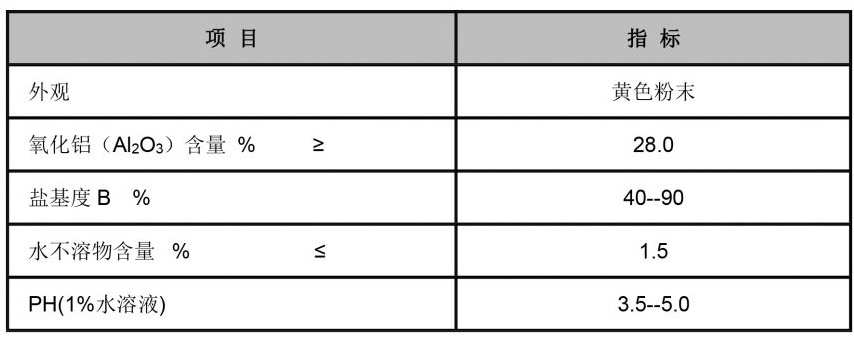poly aluminium
Understanding Poly Aluminium A Versatile Coagulant in Water Treatment
Poly aluminium, commonly referred to as poly aluminium chloride (PAC), is an inorganic polymer used primarily in water treatment processes. Its unique properties and versatility make it a preferred choice for various applications, especially in the purification of drinking water, wastewater treatment, and even in some industrial processes. This article delves into the composition, properties, applications, and advantages of poly aluminium in water treatment.
Composition and Structure
Poly aluminium chloride is a compound formed by the hydrolysis of aluminium chloride. The polymeric nature of PAC is crucial because it allows for a higher degree of charge neutralization compared to traditional coagulants. PAC is composed of aluminium ions and hydroxyl ions, along with other elements that can influence its performance, such as chloride. The degree of polymerization varies, which affects its performance in different water treatment scenarios.
Properties of Poly Aluminium
One of the key attributes of poly aluminium is its varying basicity, which can be adjusted during manufacturing to suit specific applications. The basicity level (the ratio of hydroxyl ions to aluminium ions) determines the effectiveness of PAC in different water qualities. PAC generally has a high molecular weight and is a highly soluble coagulant, making it effective in a wide range of pH conditions.
Another notable feature of PAC is its rapid coagulation and flocculation abilities. These are critical properties because they determine how quickly and effectively particulate matter is removed from water. The formation of larger flocs, which can easily settle or be filtered out, is another advantage of using PAC over traditional coagulants such as alum.
Applications in Water Treatment
The primary application of poly aluminium is in the treatment of drinking water. Water treatment plants utilize PAC to remove turbidity, color, and organic matter efficiently. It is particularly favored in regions with variable water quality, as it can be effective across a wide pH range. Additionally, PAC is less sensitive to water temperature changes compared to other coagulants, thus maintaining its efficacy in various conditions.
poly aluminium

In wastewater treatment, PAC plays a significant role in the removal of suspended solids, phosphorous, and heavy metals. It is used in both municipal and industrial wastewater treatment facilities. The effectiveness of PAC in removing contaminants can significantly improve the quality of effluent water, making it safer for discharge into natural bodies of water or for reuse purposes.
The paper and pulp industry, textile dyeing, and even agriculture utilize PAC in their processes. Its ability to clarify liquids and separate solids makes it invaluable across these sectors. For instance, in the textile industry, PAC helps in dyeing processes by improving the clarity of water used, thus enhancing color yield and reducing wastewater contamination.
Advantages of Poly Aluminium
The advantages of using poly aluminium chloride are manifold. First and foremost, PAC requires a lower dosage compared to traditional coagulants, which can result in cost savings. Reduced chemical usage also minimizes the risk of residual chemicals in treated water, which is a common concern in water treatment.
Moreover, PAC generates less sludge compared to other coagulants, meaning that it requires less handling and disposal in wastewater treatment facilities. This is particularly significant in large-scale operations where sludge management can become a problematic issue.
Another notable benefit is the overall improvement in water quality. Users often report clearer water, reduced odor, and lower levels of organic contaminants when using PAC. Its compatibility with various water types and its efficiency in diverse environmental conditions further enhance its attractiveness.
Conclusion
In summary, poly aluminium chloride is a versatile and highly effective coagulant with a wide range of applications, especially in water and wastewater treatment. Its favorable properties, such as adjustable basicity, rapid coagulation capabilities, and lower dosage requirements, have established it as a preferred choice for water treatment facilities worldwide. As the demand for clean water continues to rise, the importance of effective and efficient treatment solutions like poly aluminium will only become more pronounced. Whether for drinking water purification or industrial applications, PAC stands as a testament to the advancements in water treatment technologies, ensuring that people and industries alike have access to safe and clean water.
-
lk-319-special-scale-and-corrosion-inhibitor-for-steel-plants-advanced-solutions-for-industrial-water-systemsNewsAug.22,2025
-
flocculant-water-treatment-essential-chemical-solutions-for-purification-processesNewsAug.22,2025
-
isothiazolinones-versatile-microbial-control-agents-for-industrial-and-consumer-applicationsNewsAug.22,2025
-
scale-inhibitor-key-solutions-for-water-system-scale-preventionNewsAug.22,2025
-
organophosphonates-versatile-scale-inhibitors-for-industrial-water-systemsNewsAug.22,2025
-
scale-and-corrosion-inhibitor-essential-chemical-solutions-for-water-system-maintenanceNewsAug.22,2025





